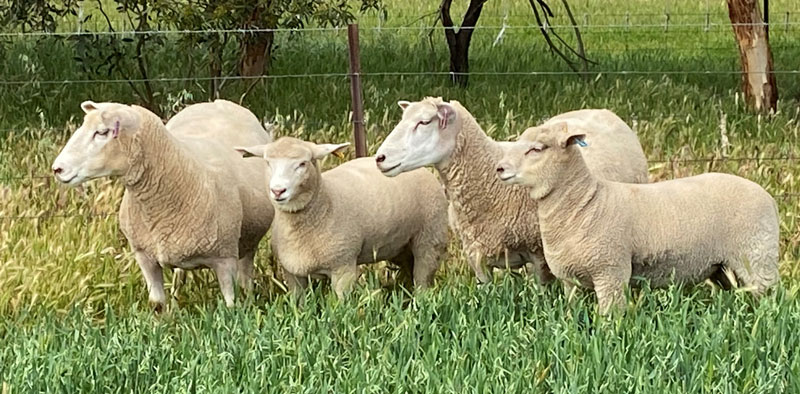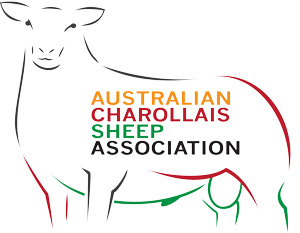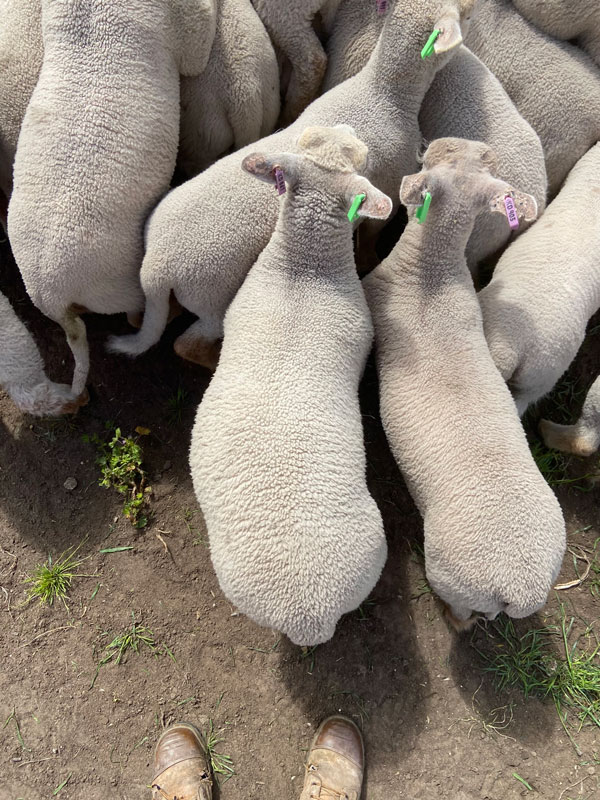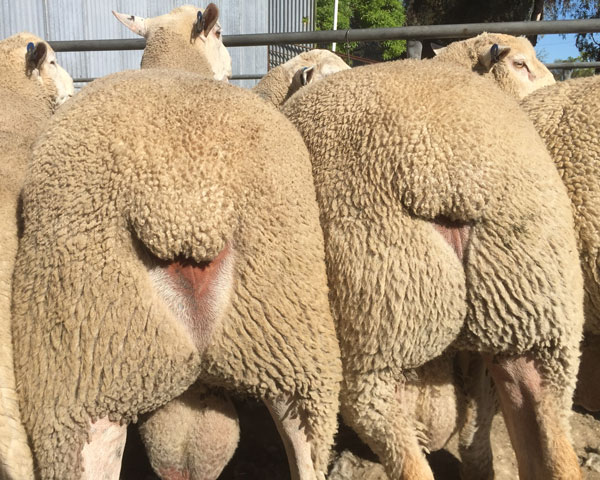KD Charollais & Composites
History of the Composites
In 1999 we began breeding Coolalee sheep.
The Coolalee was developed in the 1980’s in NSW using 6 different types of British breed sheep. The biggest attraction for me was the easy lambing attribute and Coolalee sires were used confidently over ewe lambs and maiden ewes without any lambing issues. As a stabilized breed they were designed to produce later maturing lambs that could be taken to heavy slaughter weights without running to fat. As we worked with the breed it was apparent that lamb producers wanted earlier maturing lambs and so we infused some White Dorper for early growth and extra muscling.
The K.D. Composite breed is a non seasonal breeder and I consistently wean lambs at 150% + and have got to 195% with a high twinning rate and minimal litters of lambs (triplets).


Why use KD Charollais & Composites
- Fast growing lambs
- No lambing issues
- Virile long lasting rams
- Mate at 1% + 1
- Clean points- less seed/crutching
- High yielding carcasses
- Good feed utilisation
- High fertility

Enter the Charollais
Since 2015 we have used Charollais sires over some the composite ewe base. This composition is hitting all of the attributes that we have have set down for a terminal / maternal breed.
We are very impressed with the muscling and fast growth of lambs.
The Charollais already had a great reputation as producing small birth weight lambs and this has only enhanced that attribute that the K.D. Wooled Composites have had since we started using them.
The Charollais sired lambs carry a downs type wool with minimal head and leg wool.
In 2018 we purchased full blood Charollais ewes and built numbers of ewes via embryo transfer. As at 2022 we have built to 70 full blood Charollais ewes and there are 200 + composite ewes that carry 75% + Charollais genetics.
Charollais are Rams for Ewe Lambs - Why?
For 20+ years we have breed a genetic line of sheep that were designed for producing easy born lambs. We used to assess rams by pushing their head down and placing your fingers between the shoulder blades. If you could fit 3 fingers (adult male size) side ways in the area between the shoulder blades they were deemed to be broad and were not recommended for use over ewe lambs. The selection criteria can be far more scientific than that method these days but the genetic trend of easy lambing is still strong in our composite sheep line and has been further enhanced with the infusion of the Charollais into the genetic line in 2015. Lambing ewes at 12-15 months of age is common in our sheep business and we incur minimal difficulties in the delivery of lambs. We don’t head around the paddock at lambing time with a bucket and scales weighing stud lambs. The lambs are typically born under 4 kg .
The financial loss associated with lamb loss is detrimental to the value of the ewe that you may have purchased or bred. WHY?
- Lamb or lambs may die
- Ewe may die
- Stress on farmer and dogs to catch ewe in trouble
- Mismothering of other lambs while catching ewe
- Damage to ewe that prevents further breeding

